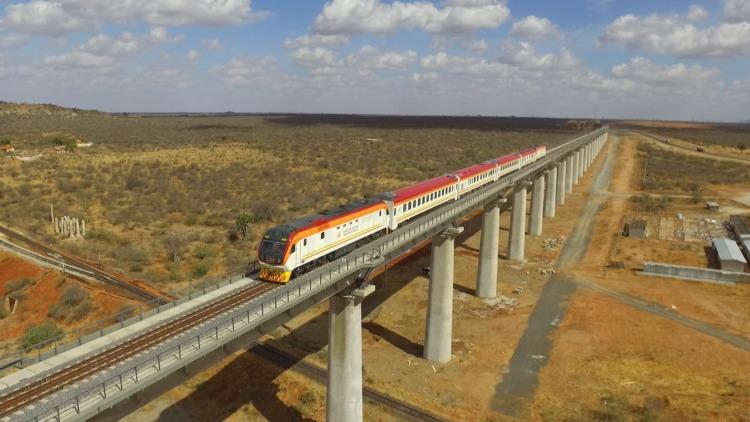The pandemic effects and the Ukrainian crisis have led to rising commodity prices, surging inflation, and shifts in the global financial situation that have transformed African trade and production capabilities.
- After overperforming in its post-pandemic recovery in 2021, Africa’s economic growth will expectedly lag in 2022.
- According to IMF, exports topped pre-pandemic levels to reach $150 billion in the first quarter of 2022.
- Countries with highly diversified markets, like Kenya, have boosted domestic processing and manufacturing to establish themselves as intra-regional trade hubs.
Economic growth to lag amid economic diversification
After overperforming in its post-pandemic recovery in 2021, Africa’s economic growth will expectedly lag in 2022. IMF projects that growth will drop from 4.6% in 2021 to 3.8%. The global shocks from Russia’s invasion of Ukraine have dampened Africa’s economic prospects.
The high import bills and fuel prices continue to strain import-dependent countries’ fiscal and external balance sheets. The strain risks the recent poverty alleviation progress. Consequently, Africa will remain the only developing economic zone and emerging market where per capita incomes will not revert to the pre-pandemic levels by 2023.
ALSO READ: Outlook: Investment opportunities in Africa’s water transport
A closer analysis of the GDP figures reveals economic growth disparities across nations and sub-regions. The disparity accurately paints a heterogeneous and diverse continent comprising 54 sovereign nations covering the full range of income groups.
Recent economic diversification has incredibly cushioned East Africa against the pandemic shocks. Moreover, solid agricultural performance, closer intra-regional trade, and public spending on flagship infrastructure projects have supported the region’s GDP.
For instance, the pandemic severely ravaged the South African region. However, through significant fiscal stimuli, the region’s economic growth recovered in 2021. South Africa posted its highest GDP since 2007. Nevertheless, the African Development Bank (AfDB) projects a growth deceleration in the region in 2022 as the effects of fiscal stimuli wane.
Meanwhile, North Africa posted the most remarkable post-pandemic economic rebound. The AfDB estimates the region’s 2021 growth at 11.7%. Lifting oil export barriers on Libya towards the end of 2020 boosted North Africa’s growth significantly.
It is clear that the Ukrainian crisis and the ensuing trade sanctions against Russia have heightened the risk balances on African trade and economic outlook. The conflict has caused disruptions in global supply chains for essential products, including fuel, fertilisers, and agricultural produce.
Irregular post-pandemic economic recovery
Africa has continued its post-pandemic trade recovery. Following a sharp decline during the pandemic, exports have since risen. According to IMF’s Direction of Trade Statistics (DOTS), exports topped pre-pandemic levels to reach $150 billion in the first quarter of 2022.
However, similar to GDP, the sub-regions have not equally contributed to African trade growth. Since 2019, exports from East Africa have remained reasonably steady. However, some countries in the region have individually stood out. For instance, Rwanda accounts for just 8% of East Africa’s trade.
Rwanda performed exceptionally, raising its exports from $227.2 million in the first quarter of 2019 to $695.1 million in the last quarter of 202. A 7.4% GDP growth boosted this export growth in 2021.
Futuristically, the soaring commodity prices, particularly energy and food, will have varied effects on African trade. Consequently, some countries will benefit, with others losing out. Energy-exporting nations will gain from higher-than-expected prices if they find additional production capacity. Contrastively, food- and energy-importing countries may bear the brunt of inflation exacerbated by global supply chains’ disruption.
Most African countries lack local refining capacity. Therefore, they export crude oil and import refined petroleum products. This trend makes the nation’s net energy importers, putting downward pressure on the African economy.
ALSO READ: Africa: Focus on transforming agricultural practices to boost food production
Local solutions for African trade

Mukudzei Borerwe, chief operations officer at Asoko Insight, a corporate data platform for Africa, has noted that part of the challenge lies in Africa having 54 nations. Therefore, the region is highly diverse from a social and economic perspective. Politics also make it challenging for countries to prioritise trade in place of more pressing local issues.
The effect of external factors on trade
Nevertheless, according to Robert Besseling, CEO of specialist intelligence consultancy Pangea-Risk, other external factors have boosted African trade growth. Supply chain disruptions, fading demand for Africa’s resources in China, and the pandemic aftershocks have forced Africa to look away from Asian dependence to build their domestic markets.
Previously, a significant share of soft commodities, manufactured goods, oil and gas from African markets went to China. In exchange, a large share of the manufactured goods from China or Vietnam came to Africa.
These supply chains have taken a hit. Consequently, countries with highly diversified markets, like Kenya, have boosted domestic processing and manufacturing to establish themselves as intra-regional trade hubs. For these countries, diversification and domestic market capability represent a longer-term opportunity.
Africa has seen plenty of export credit agencies and development finance institution-backed infrastructure projects. These projects include the Zimbabwe-South Africa Beitbridge border post-rehabilitation, Côte d’Ivoire’s new dry bulk port, and rail and road upgrades to the breadth and length of the continent. The projects remain crucial in closing Africa’s infrastructural gap. As a result, Africans can easily trade within Africa. However, there is still much to do.
The food security factor in the African trade
Food and agricultural products represent another exciting trend in African trade. Africa is currently exporting and importing more food than two decades ago. Lower- and middle-income countries like Kenya, Ghana, and Côte d’Ivoire lead in agricultural exports. Their annual net agricultural trade surplus stands at $5 billion.
Africa has more than 60% of arable land globally. Ironically, almost half Africa’s population depend on Ukraine and Russia for wheat. Soaring prices and global supply chain disruptions have pushed millions into starvation and food insecurity.
Several African countries have adopted export restrictions and domestic price controls to address food security concerns. These countries include South Africa, Ethiopia and Nigeria. Whereas Uganda and Malawi have offered subsidies to vulnerable populations, Benin has opted for an export ban.
The African trade prospects
The rising commodity prices, surging inflationary pressures, and the contracting global financial situation have risked African trade and production capabilities. Moreover, the rising threat of sovereign defaults poses a severe risk to the growth of African trade. Thus, African trade prospects remain unclear, considering the challenging global economic scenario.
The Covid-19, energy and food shortages have hit with the countries having minimal or no policy space to respond. As a result, African countries have fallen into a real risk of debt distress and even possibilities for sovereign debt default.
Most African nations are yet to recover from the Covid-induced economic slowdown. Even for the ones with diversified economies, there is not enough revenue for debt servicing. This is not good news considering that some countries have Eurobonds capital repayment due in the next three to five years.
This outlook remains crucial since a country defaulting means it can no longer tap into international markets while losing its trade finance facilities. Generally, Africa’s trade prospects are anything but buoyant. Governments can only focus on survival as the immediate need for most economies.
Nevertheless, the crisis has encouraged some countries to boost agriculture. For instance, Zambia has invested in the growth of local food production with an increase in wheat yields in the last year. Moreover, Cameroon has raised funding for more wheat production, and Ethiopia expects to grow their grain production by 70% by the end of the year.
READ: Rising inflation in Africa points towards harder economic times











